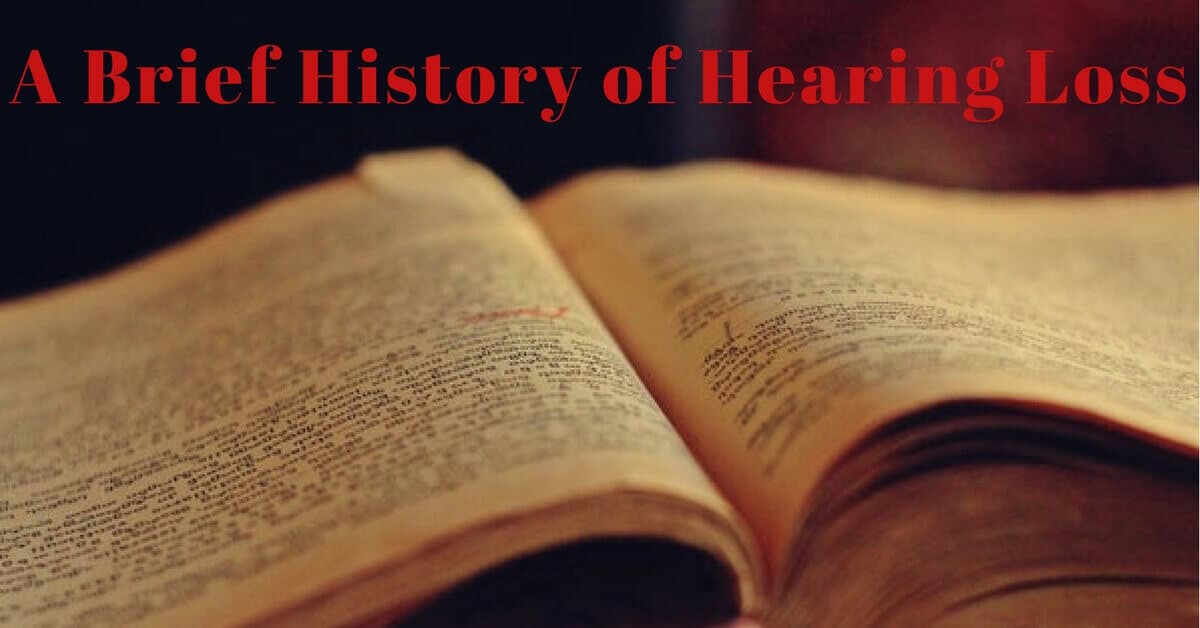Roughly 10 percent of the world’s population suffers from hearing loss, to some extent. That is approximately 700 million people who have difficulty hearing. This can range from people who only have mild hearing loss, those with moderate to severe hearing loss who rely on hearing aids, and diverse Deaf communities across the globe who communicate using sign language.
Hearing loss can be either conductive–when sounds cannot reach the inner ear–or sensorineural–when the cells or nerves in the inner ear cannot receive or transmit sounds. Both types of hearing loss have long been a part of human history, but what evidence of deafness exists in the ancient world? Here are a few of the first references to deafness that have been found in historical data.
“Ear-That-Hears-Badly”
The earliest written record of hearing loss comes from ancient Egypt, where the Ebers Papyrus (a medical papyrus of herbal knowledge) offered a remedy for “Ear-That-Hears-Badly.” The cure was an injection of olive oil, red lead, ant eggs, bat wings and goat urine into the ears. It is not known whether this was used to treat temporary hearing loss caused by blockages–which may have benefited from olive oil–or more serious cases of hearing loss. There is also evidence that the Ancient Egyptians were taught to treat disabled individuals with respect, including the deaf.
Sign language used by 10th century monks
Plato’s writings give us our first reference to a sign language used by mute people, the earliest record of specific signs comes from 10th century monks in Burgundy. In order to keep their strict vows of silence, the monks created a collection of hand signals that allowed them to communicate without speaking. Witnesses of this language noted that the signs ‘would have been sufficient if they lost the use of their tongues’. The language became known as Cluniac sign language and had a significant impact on monastic life in Europe. It is also thought to be the inspiration for Ponce de Leon’s manual alphabet (finger-spelling) developed at the first school for the deaf in the mid-1500’s.
Early hearing aids
There is evidence of a Roman consul, Hadrianus, cupping his hands behind his ears to hear better, but the earliest mention of a hearing device comes in the 1588 writings of Italian scholar Giambattista della Porta, which describe a horn-like instrument, modeled after the ears of animals, which could help to help amplify sounds. The first ear trumpets were created by Paolo Aproino, one of Galileo’s students, in the 1610’s. Ear trumpets did not become popular, however, until the end of that century.
So, there is ample written evidence for the treatment of hearing loss, the use of early sign language, hearing instruments and some changing perceptions towards deaf people dating back to 3,500 years ago. But are there any clues about deafness before then?
Skeletal signs of hearing loss date back to prehistoric times
Individuals with sensorineural hearing loss leave no evidence of deafness after death and decomposition, but clues about deafness in the distant past can still be found in skeleton remains, in the individuals who had conductive hearing loss that caused changes in the bones of the ears. Or, as in the case of the Egyptian mummy Pum II, a perforated eardrum can signal the existence of hearing loss.
As far as skeletal evidence of hearing loss, the earliest known example dates back to over 10,000 years ago. At Shanidar Cave, an archaeological site in Iraq, it was discovered that many of the people buried there had exostoses, or bony growths in the ear canal that can cause problems with hearing. In the same cave, a Neanderthal skeleton dating back to between 45,000 and 35,000 years old had similar exostoses and likely suffered from profound hearing loss. Many examples exist throughout more recent history of individuals with conductive hearing loss being given special burials; one such example is a congenitally deaf Roman child from Britain who was buried face down in a coffin made of stone and covered with roof tiles.
Although they have been largely overlooked by historians and archaeologists, deaf people have been present in great numbers throughout history, extending back to ancient societies and even the prehistoric world. And taking into account the fact that many illnesses and accidents that cause deafness are more preventable now, there may have been far more people with hearing loss in the past than there are today. To better understand this common human condition, researchers should delve deeper into the historical and biological records that exist.
Visit Us at Desert Valley Audiology
There’s no reason to live with untreated hearing loss. If you have experienced changes in your hearing, contact us at Desert Valley Audiology today to schedule a hearing test.

